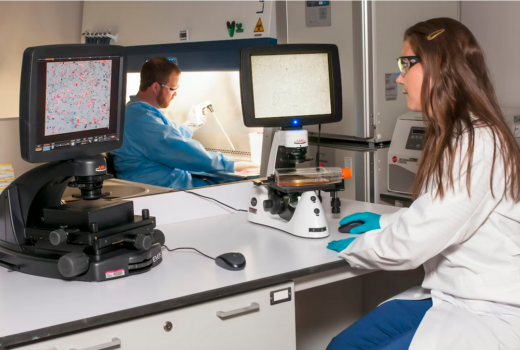5 Aarde-planeten in beeld

“We went from zero to 68 Earth-sized planet candidates and zeroto 54 candidates in the habitable zone – a region where liquidwater could exist on a planet’s surface. Some candidates could evenhave moons with liquid water,” said William
Kepler, a space telescope, looks for planet signatures by measuringtiny decreases in the brightness of stars caused by planetscrossing in front of them – this is known as a transit. Sincetransits of planets in the habitable zone of sun-like stars occurabout once a year and require three transits for verification, itis expected to take three years to locate and verify Earth-sizeplanets orbiting sun-like stars.
Planet candidates require follow-up observations to verify they areactual planets. “We have found over twelve hundred candidateplanets – that’s more than all the people have found so far inhistory,” said Borucki. “Now, these are candidates, but most ofthem, I’m convinced, will be confirmed as planets in the comingmonths and years.”
The findings increase the number of planet candidates identifiedby Kepler to-date to 1,235. Of these, 68 are approximatelyEarth-size; 288 are super-Earth-size; 662 are Neptune-size; 165 arethe size of Jupiter and 19 are larger than Jupiter. Of the 54 newplanet candidates found in the habitable zone, five are nearEarth-sized. The remaining 49 habitable zone candidates range fromsuper-Earth size — up to twice the size of Earth — to larger thanJupiter.
The findings are based on the results of observations conducted May12 to Sept. 17, 2009 of more than 156,000 stars in Kepler’s fieldof view, which covers approximately 1/400 of the sky. “The factthat we’ve found so many planet candidates in such a tiny fractionof the sky suggests there are countless planets orbiting stars likeour sun in our galaxy,” said Borucki. “Kepler can find only a smallfraction of the planets around the stars it looks at because theorbits aren’t aligned properly. If you account for those twofactors, our results indicate there must be millions of planetsorbiting the stars that surround our sun.”
Among the stars with planetary candidates, 170 show evidence ofmultiple planetary candidates. “Another exciting discovery hasbeen the tremendous variations in the structure of the confirmedplanets – some have the density of Styrofoam and others are denserthan iron. The Earth’s density is in between. The first four monthsof data have given us an enormous amount of interesting informationfor the science community to explore and to find the planets amongthe candidates that we have found,” said Borucki.
“Keep in mind, in the future, we’ll have even more data for smallplanets in and near the habitable zone for everyone to look at.”Kepler will continue conducting science operations until at leastNovember 2012, searching for planets as small as Earth, includingthose that orbit stars in a warm habitable zone where liquid watercould exist on the surface of the planet. Since transits of planetsin the habitable zone of solar-like stars occur about once a yearand require three transits for verification, it is expected to takethree years to locate and verify Earth-size planets orbitingsun-like stars.
Borucki predicted that the search using the Kepler spacecraft’scontinuous and long-duration capability will significantly enhancescientists’ ability to determine the distributions of planet sizeand orbital period in the future. “In the coming years, Kepler’scapabilities will allow us to find Earth-size planets in thehabitable zone of other stars,” Borucki said. “Future missions willbe developed to study the composition of planetary atmospheres todetermine if they are compatible with the presence of life. Thedesign for these missions depends of Kepler finding whetherEarth-size planets in the habitable zone are common or rare.”
“Kepler is providing data 100 times better than anyone has everdone before. It’s exploring a new part of space, a new part ofthe universe that could not be explored without this kind ofprecision, so it’s producing absolutely beautiful data. We’reseeing the variability of stars like no one has ever seen before.We’re finding planets smaller than anyone has ever seen before,because the data quality is extremely good.”
Meest Gelezen
‘Free riding brengt het hoger onderwijs in de problemen’
Vrouwen houden universiteit draaiende, maar krijgen daarvoor geen waardering
Hbo-docent wil wel rolmodel zijn, maar niet eigen moreel kompas opdringen
‘Sluijsmans et al. slaan de plank volledig mis’
Aangepast wetsvoorstel internationalisering dient vooral samenleving in plaats van student


